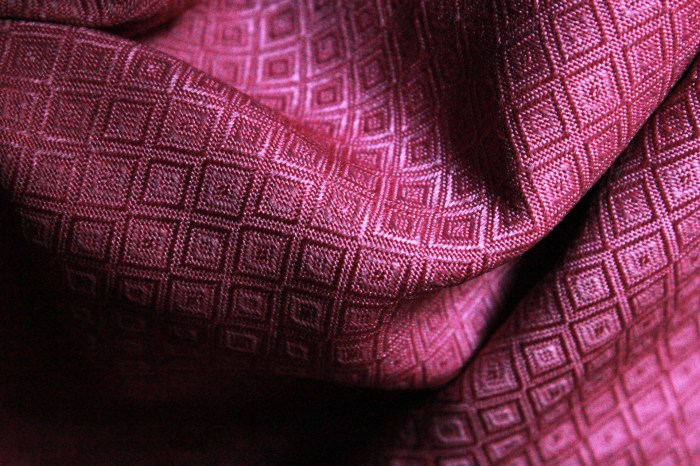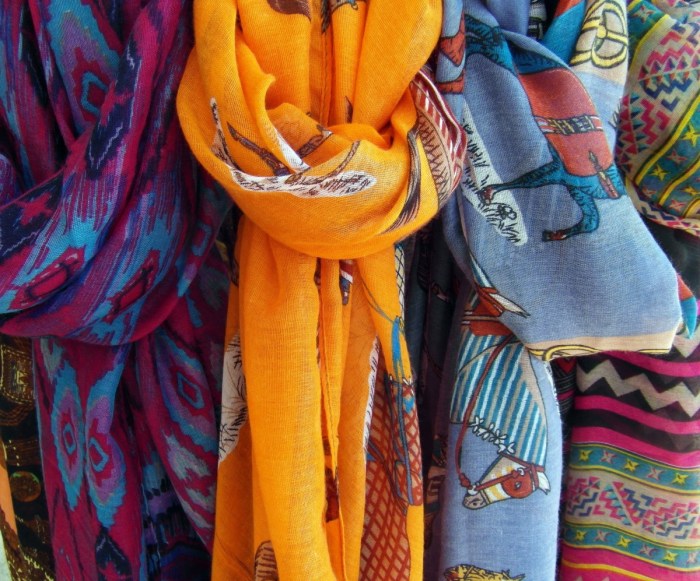
Understanding Textile Supply Chain Transparency is more than just a trend; it’s a vital part of how we engage with the fashion industry today. By shedding light on where our clothes come from, we can make informed choices that resonate with our values.
This exploration dives into the significance of transparency, how it builds consumer trust, and why brands are catching on to the benefits of being open about their sourcing and production processes. Let’s unravel the layers of the textile supply chain together!
Importance of Textile Supply Chain Transparency
The textile supply chain is complex and often opaque, involving numerous stakeholders from raw material suppliers to retailers. Transparency in this chain is crucial for understanding and improving the impact of the industry on the environment and society. As consumers grow more aware of ethical practices, brands that embrace transparency can differentiate themselves in a crowded marketplace.Transparency fosters accountability and allows consumers to make informed choices about their purchases.
In an age where information is readily available, brands that provide insight into their supply chain are seen as more trustworthy. This trust can translate into increased brand loyalty, as consumers are more likely to support brands that align with their values and ethics. For instance, a survey by the Global Sustainability Institute revealed that 66% of consumers are willing to pay more for sustainable brands, highlighting the financial benefits of transparency.
Impact on Consumer Trust and Brand Loyalty
The relationship between transparency and consumer trust is profound, as consumers increasingly demand information about where and how their products are made. When brands openly share their supply chain practices, they cultivate a sense of authenticity and integrity. Here are examples of how transparency has influenced consumer behavior:
1. Patagonia
This outdoor apparel brand is renowned for its commitment to environmental sustainability and ethical manufacturing. By providing detailed information on their supply chain, they have built a loyal customer base that appreciates their transparency and activism. Patagonia’s “Worn Wear” program encourages customers to repair and reuse items, reinforcing their values of sustainability.
2. Everlane
Known for their “Radical Transparency” model, Everlane discloses the true costs of their products, including material, labor, and transportation costs. This level of openness has resulted in a strong following among consumers who appreciate knowing that they are supporting a brand that values honesty.
3. Eileen Fisher
This women’s clothing brand focuses on sustainable practices and provides information about their supply chain, including where materials are sourced and how labor practices are managed. Their commitment to transparency has garnered a loyal customer base that supports their mission of creating ethical fashion.By embracing transparency, brands not only build consumer trust but also enhance their reputations and foster long-term loyalty.
This results in a robust customer base that is more likely to advocate for the brand and engage with its initiatives on sustainability and ethics.
Employment and Work in the Textile Industry

The textile industry plays a significant role in global employment, encompassing a wide range of activities from raw material production to finished product distribution. Understanding employment trends and the necessary skills within this sector is crucial for ensuring a sustainable and ethical supply chain. As we explore this topic, we will highlight key employment trends, necessary skills for various roles, and the implications of transparency on labor practices and worker rights.
Key Employment Trends in the Textile Supply Chain
The textile supply chain has seen several employment trends that reflect broader economic and social changes. One significant trend is the shift towards automation and digitalization, influencing job availability and required skills. Additionally, there is a growing focus on sustainable practices, prompting companies to hire individuals who are knowledgeable about eco-friendly materials and processes.
- Increased demand for skilled labor in areas such as textile design and sustainable production methods.
- Rise of remote work and digital roles in supply chain management, which has expanded job opportunities beyond traditional manufacturing hubs.
- Growing emphasis on fair trade and ethical labor practices, leading companies to prioritize transparency in their hiring processes.
Skills Required for Various Roles in Textile Management
Different roles in the textile industry require a diverse set of skills that cater to specific functions within the supply chain. Understanding these skill sets can help individuals prepare for careers in this field and enable companies to find qualified candidates.
- Textile Designers: Creativity and proficiency in design software, along with knowledge of material properties.
- Production Managers: Strong leadership abilities, project management skills, and expertise in production processes.
- Quality Assurance Inspectors: Attention to detail, analytical skills, and an understanding of quality standards in textiles.
- Supply Chain Analysts: Proficiency in data analysis, problem-solving skills, and knowledge of supply chain logistics.
Impact of Transparency on Labor Practices and Worker Rights
Transparency in the textile supply chain profoundly impacts labor practices and worker rights. When companies maintain openness about their sourcing and manufacturing processes, it fosters an environment where ethical labor practices can thrive. This openness is essential for holding companies accountable and ensuring that workers are treated fairly.
“Transparency acts as a catalyst for improving labor conditions and enforcing worker rights within the textile industry.”
- Enhanced monitoring of labor practices results in better working conditions, fair wages, and reduced exploitation.
- Increased consumer awareness and demand for ethical practices encourage brands to adopt transparent policies.
- Collaboration with NGOs and labor organizations enables companies to improve compliance with labor standards.
Technological Innovations Supporting Transparency

The textile supply chain is evolving rapidly, necessitating greater transparency at every stage, from raw materials to finished products. Technological innovations play a crucial role in enhancing visibility, which not only fosters ethical practices but also builds consumer trust. By leveraging advanced technologies, stakeholders can ensure accountability and sustainability within the industry.Blockchain technology stands out as a groundbreaking solution that significantly enhances traceability in textile sourcing.
Unlike traditional record-keeping methods, blockchain provides a decentralized ledger that records every transaction in a secure and immutable manner. This allows brands and consumers to track the journey of textiles, from the initial sourcing of raw materials all the way to retail. Such transparency helps in verifying claims about sustainability, fair labor practices, and the ethical origins of the materials used in clothing production.
Technological Solutions for Supply Chain Transparency
Numerous technological innovations are transforming how transparency is achieved in the textile supply chain. Below is a table showcasing various technologies and their applications:
| Technology | Application | Benefits |
|---|---|---|
| Blockchain | Immutable ledger for tracking textile origins and transactions | Enhanced traceability and consumer trust |
| RFID (Radio Frequency Identification) | Real-time tracking of inventory levels and shipments | Improved supply chain efficiency and reduced losses |
| IoT (Internet of Things) | Smart sensors that monitor environmental conditions during production | Ensures compliance with sustainability standards |
| AI and Machine Learning | Data analysis for predicting supply chain disruptions | Proactive management and risk mitigation |
| Cloud Computing | Centralized data management for collaboration among stakeholders | Streamlined communication and data sharing |
Each of these technologies serves a distinct purpose but collectively contributes to a more transparent and accountable textile supply chain. By embracing these innovations, brands can offer clear visibility into their operations, allowing consumers to make informed choices aligned with their values regarding sustainability and ethical production practices. The implementation of these technologies not only benefits consumers but also enhances operational efficiencies and fosters responsible business practices throughout the industry.
Concluding Remarks
In summary, embracing Textile Supply Chain Transparency not only enhances brand loyalty but also fosters ethical practices within the industry. As consumers become more aware, brands that prioritize transparency are likely to thrive in a competitive marketplace. Let’s continue to advocate for clarity and responsibility, ensuring that our clothing choices reflect our commitment to a better future.
Top FAQs
What is textile supply chain transparency?
Textile supply chain transparency refers to the open disclosure of sourcing, production, and labor practices within the textile industry, allowing consumers to understand how and where their products are made.
Why is transparency important in the textile industry?
Transparency builds consumer trust, promotes ethical labor practices, and encourages brands to take responsibility for their supply chains, ultimately leading to better quality and sustainability.
How does technology support transparency in the textile supply chain?
Technological innovations, such as blockchain and data tracking systems, enhance visibility and traceability in the supply chain, making it easier to verify sourcing and production methods.
Can consumers influence supply chain transparency?
Yes, consumer demand for ethical and transparent practices can pressure brands to adopt more transparent policies and improve their supply chain management.
What are some examples of brands practicing transparency?
Brands like Patagonia and Everlane are known for their commitment to transparency, offering detailed information about their sourcing, production processes, and labor practices.





